Ryan Kay makes sense of the genetics behind the coveted “red” spaniel gene, and explains why two red parents can sometimes make black puppies!
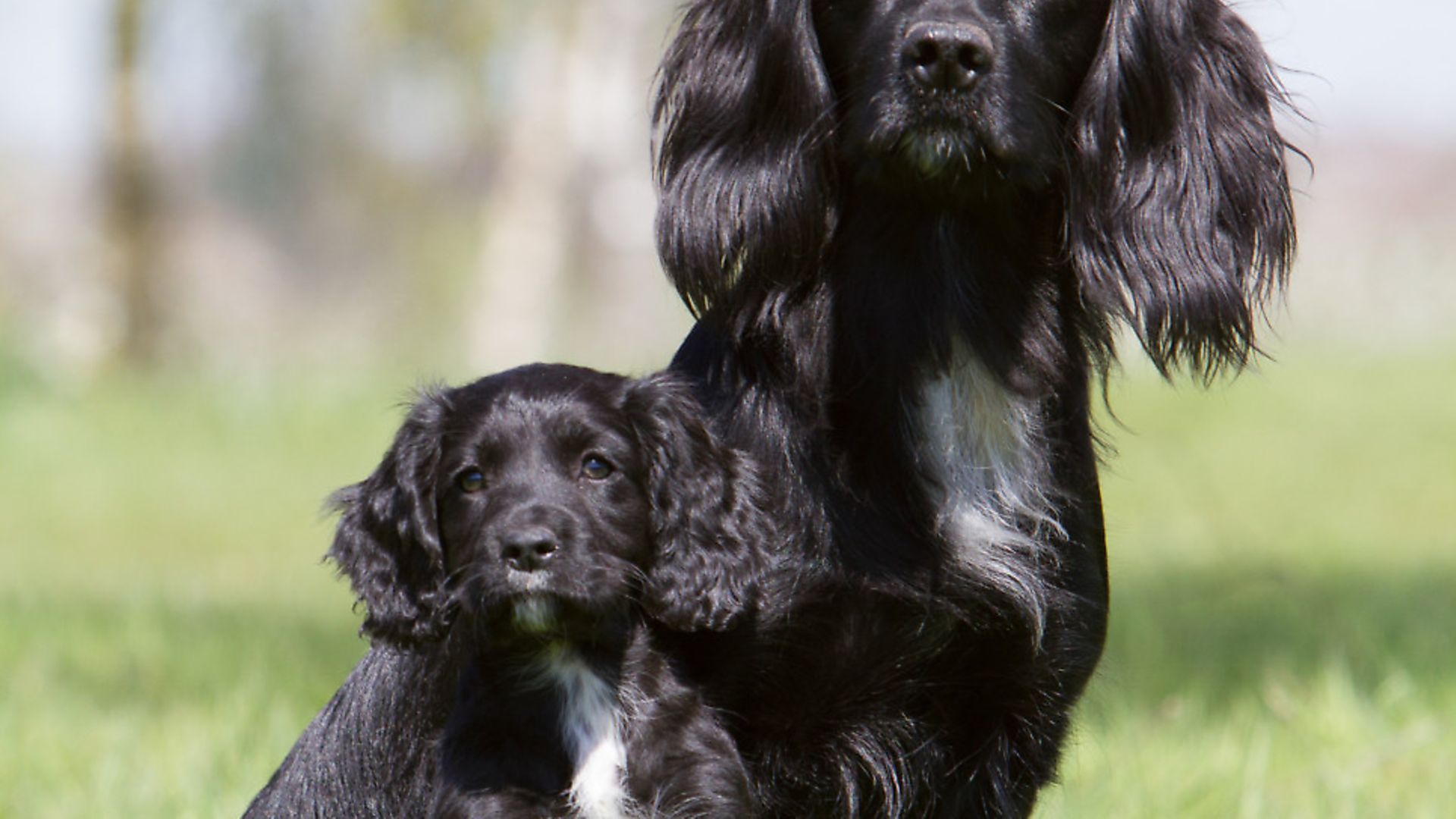 credit: Archant
credit: Archant
Red-coloured cockers are certainly very popular at the moment, due in part to some very good-looking stud dogs on offer. There certainly appears to be a more widespread and prevalent population of reds today compared to what there used to be. I for one like all the colours and in particular the parti-coloured cockers, such as open-marked black and white dogs and roan-coloured dogs. There’s no denying it… coat colour aesthetics are high on the list for many of us when it comes to choosing a pup.
Now I realise some folk get a little flustered and often tend to give up or even nod off when it comes to discussing coat colour genetics. I’m not going to go into all the colours of a cocker but I will try and explain a few colours in as layman-like terms as I can.
What I would like to do is debunk a couple of the old wives’ tales that my father and his generation used to go by. Stuff that came from listening to old Fred from down the lane, who said if you fed your dog such and such at a certain time of day, you’ll get the right colours. Or if you use a stud dog too often it will only produce bad colours. At the risk of sounding disrespectful, it’s all nonsense!
I know the colour of a dog doesn’t matter to some, but I think it does to a lot of folk, and besides, if you’re going to be looking at a dog for the next 14 years or so, you may as well have one that you like looking at!
As I’ve said before: when breeding, the best tools we have are our eyes, but with a little knowledge about how canine colours work, we can sometimes remove a bit of the guesswork when considering breeding choices where part of the requisite is coat colour. With a bit of homework, and careful selection, you can raise your chances of getting the desired colours too. For example, I will often hear things like: ‘I can’t believe it, I put a black dog on my golden bitch and every single pup came out black’!
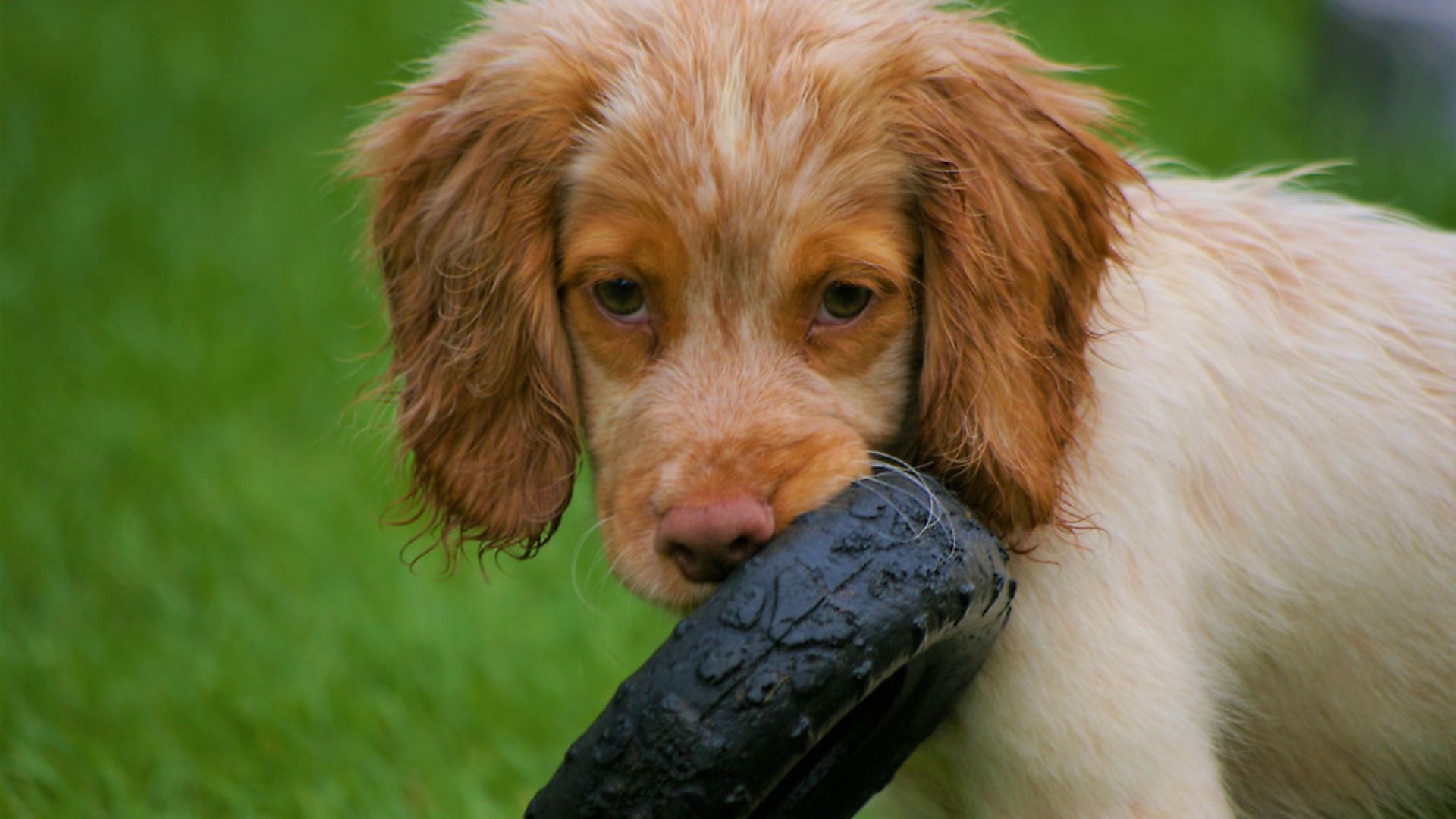 credit: Archant
credit: Archant
THE RED GENE
You’ll remember that I visited the legendary cocker man Peter Jones back in May at his home in Carmarthen. I’d been chatting to Peter on the phone prior to the visit and mentioned to him that I was looking for a well-bred cocker with some colour. And by that, I meant not black or liver! Nothing wrong with those very popular colours, I simply wanted something different.
So, when I arrived in Wales, Peter had already kindly lined me up with a potential new pup – the result of a mating from one of his stud dogs, Maesydderwen Seishin.
Long story short, a couple of months later I journeyed back down to Carmarthen to collect said pup. This is Seren (left) an orange roan cocker from a litter of three bitches, bred by Darren and Jackie Harris. So how did the orange get there? Well the orange is not actually orange. It’s the ‘red’ gene. Red/golden/lemon/orange… whatever you want to call it, it’s all the same gene, just a different shade. So if the orange shade was a little lighter on Seren, she’d be called lemon roan. For the orange (red) colour to get there, both parents had to carry a copy of the gene and both had to pass that copy on to Seren. As it’s a recessive gene, two copies are needed for it to be displayed – one from each parent.
To make it easier, think of cocker coats like this. Black is dominant – so just one copy is needed for it to be displayed. Everything else (red, liver, parti-colour etc) are recessive, so two copies are needed for them to be displayed – again, one from each parent.
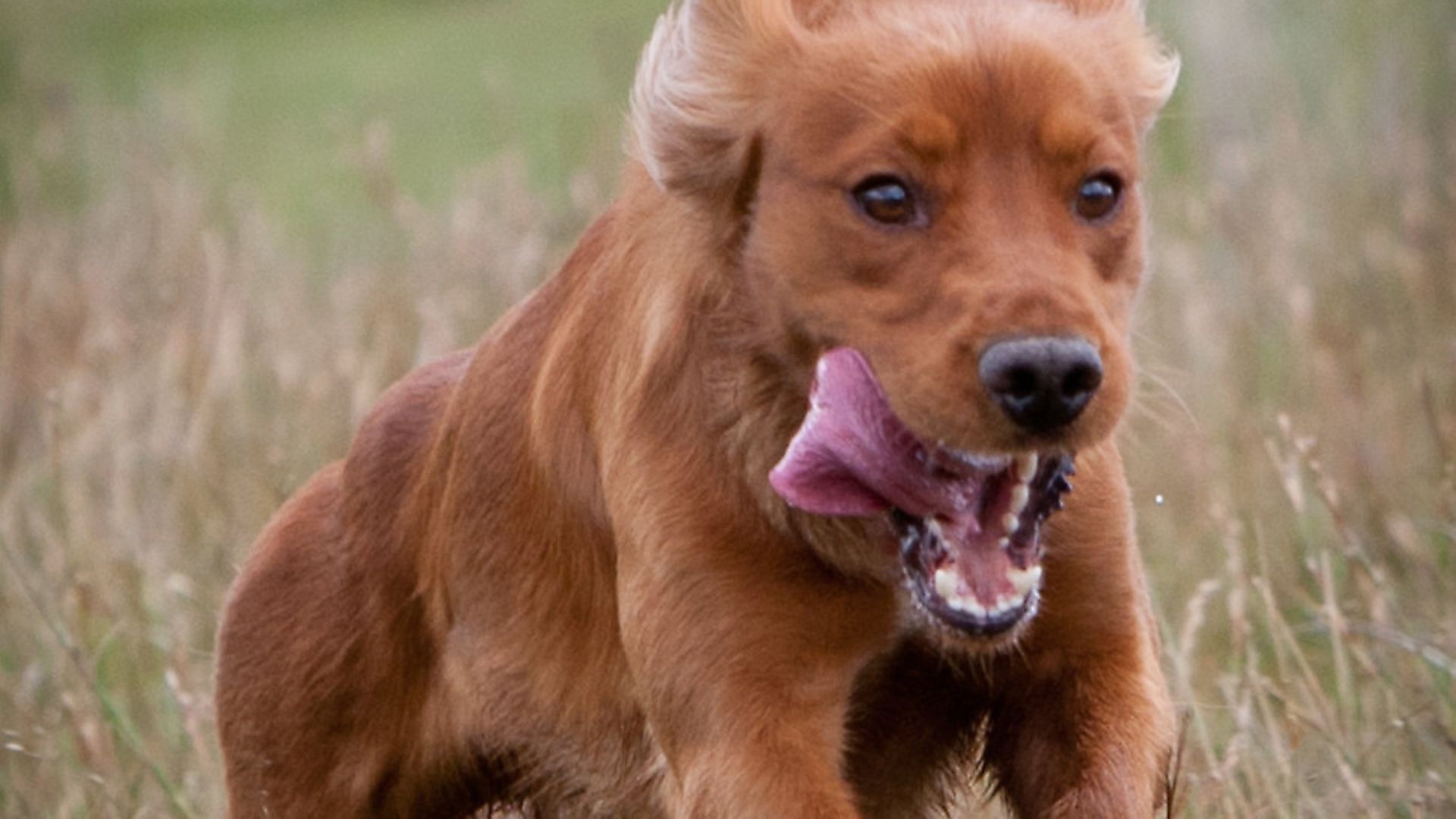 credit: Archant
credit: Archant
It’s important to say that whatever recessive colour a cocker displays it will definitely pass a copy of that colour on to all of its offspring. But it may also be carrying other hidden colours, and black, being dominant, will often hide everything.
However, while red can also hide or mask colours, it can give you a clue as to what it is hiding beneath…
The thing about red is this: it has the ability to mask liver or black. Every red/golden/lemon/orange dog can give you an inkling as to what colour lies underneath.
But how do we know what the colour is? Look at the photo of the three pups with Seren in the centre on page 94. Notice they all display red in some form, so they must all have received two copies of it – one from each parent. What we also already know is that the sire of the pups is liver and the dam is black.
Now look at the colour of their noses. Seren and her sister on the right both have light liver/pinkish noses (they have also now developed green eyes) so this means they are both liver-based. The pup on the far left, however, has a black nose, so is carrying a copy of dominant black.
So we now know the majority of the genes they are all carrying. The two liver/pinkish-nosed pups carry two copies of the liver gene and two copies of the red gene. They will pass one copy of these onto each of their offspring.
The black-nosed pup on the other hand, carries two copies of red, one copy of liver and one copy of black.
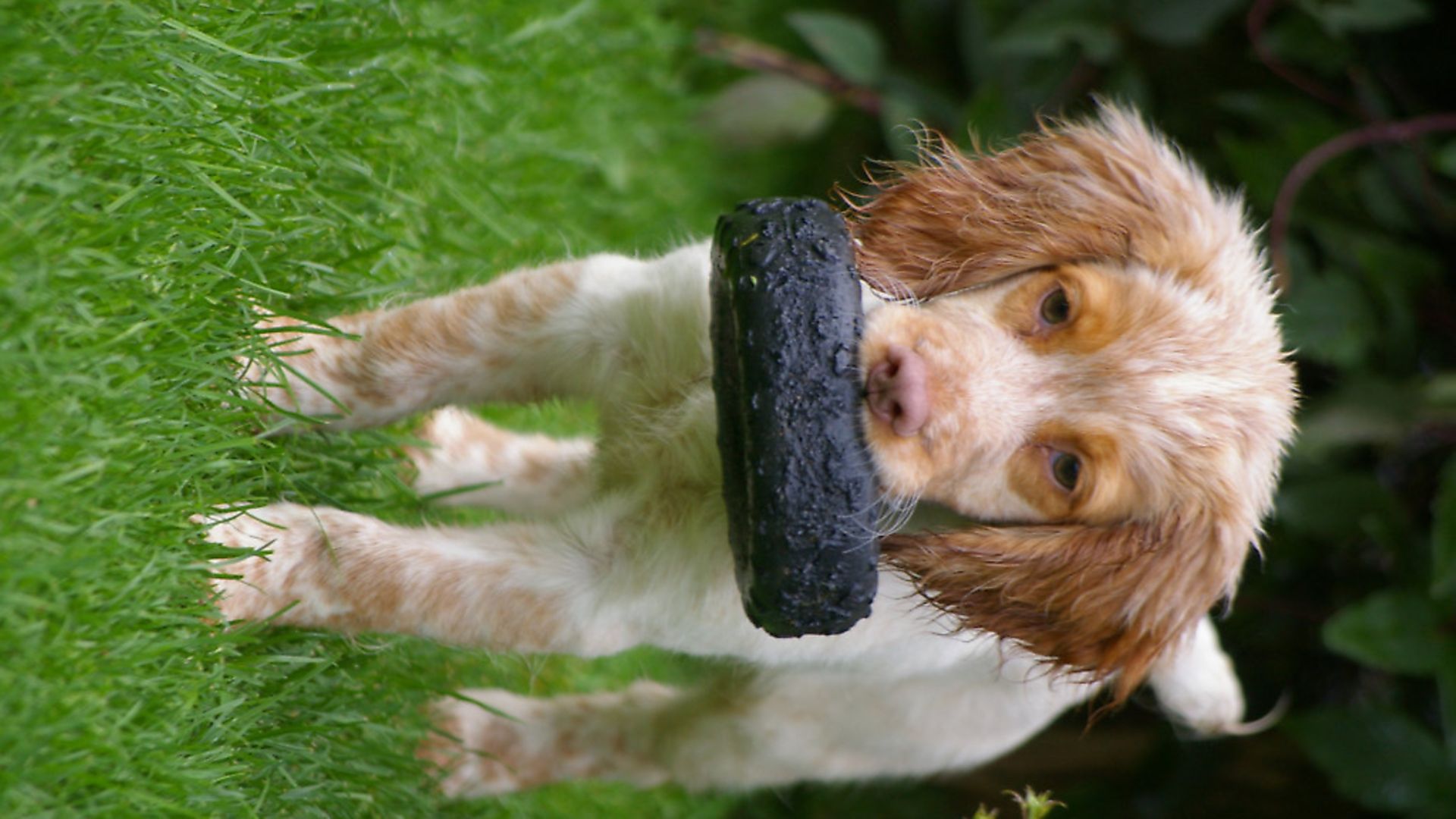 credit: Archant
credit: Archant
WHY DIDN’T THE BLACK GO TO ALL THREE PUPS?
Well as a result of this mating, we now also know a little bit more about what the parents are carrying too. Although the dam is black, she must be carrying just one copy of the black gene (as that’s all that is needed for it to be displayed) and simply passed it on to just one pup – the black-nosed one.
There’s a common myth that two red/golden/orange/lemon dogs can’t produce black pups. However, if the pup on the far left is, in years to come, mated to another red dog with a dark-pigmented nose, it is entirely feasible that the entire litter could be solid-black cockers!
So back to the aforementioned scenario – mating a black dog to a golden bitch and getting all black dogs. The two main reasons this could happen are, firstly, the golden bitch could be carrying black and the gold (red) is masking it, and could at times, produce black no matter what dog it gets mated to. And secondly, that the stud dog does simply not carry the ‘red’ gene, and so it is not there to be passed on and provide the pups with the two copies they need (one from each parent) for it to be displayed. It doesn’t mean that a black-based red/golden/orange/lemon dog won’t produce red… of course it can, it’s just that it can also produce black.
Seren is obviously carrying other genes, but I’ll not venture into that this time… I’ll quit while I’m ahead, and let you go and see if you can work out the genetics behind the colours of your dog!
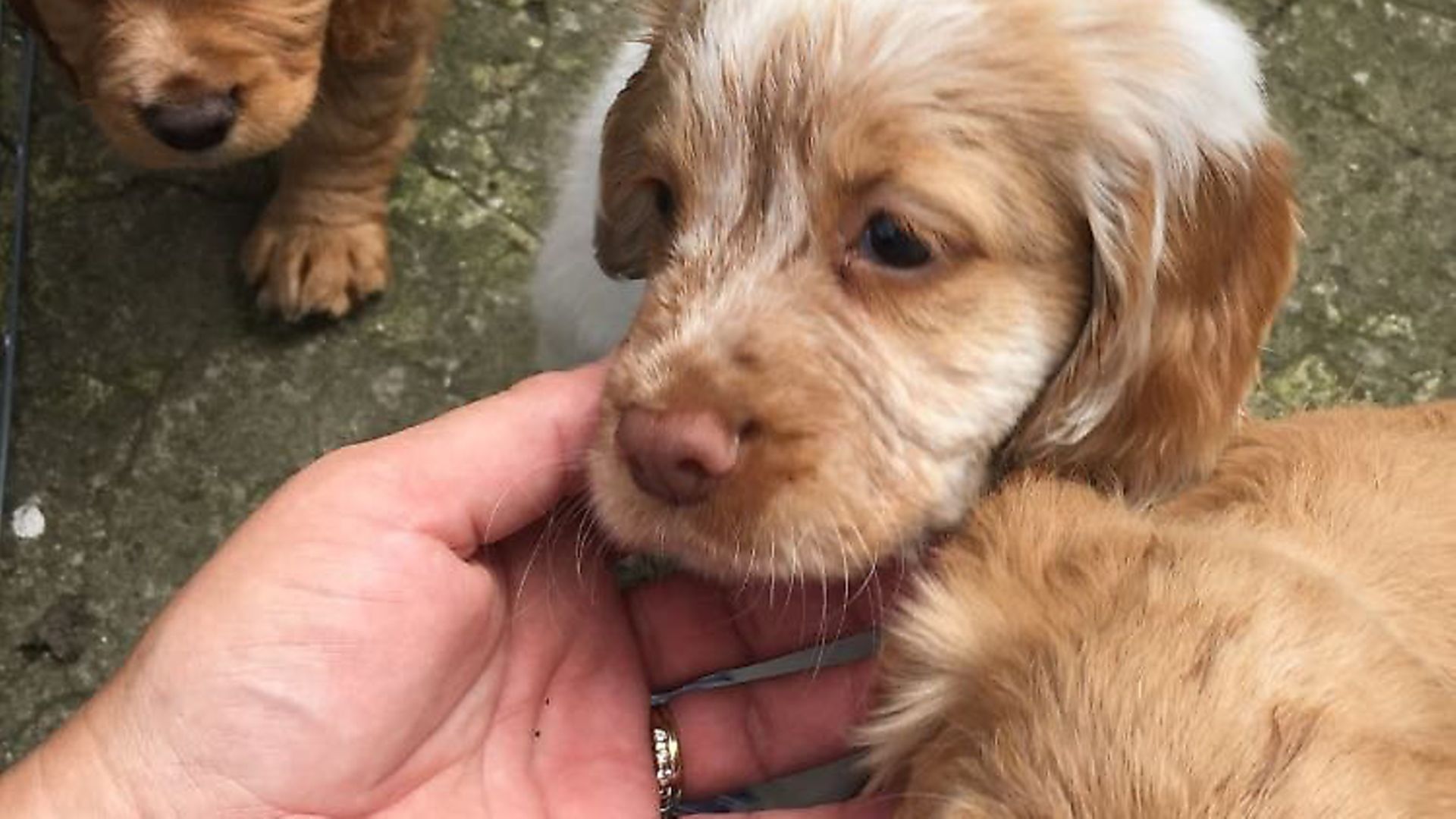 credit: Archant
credit: Archant